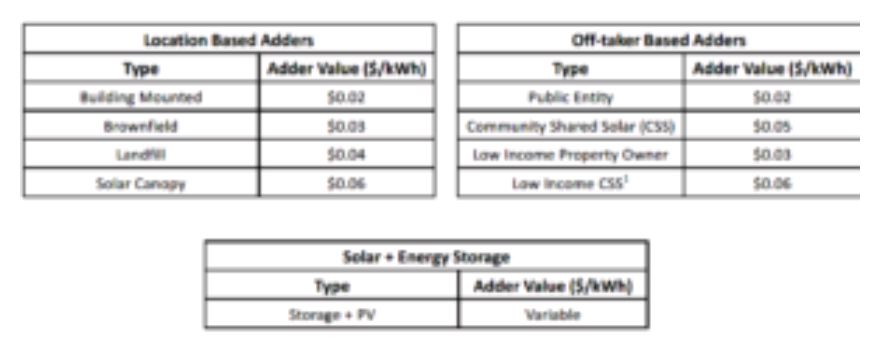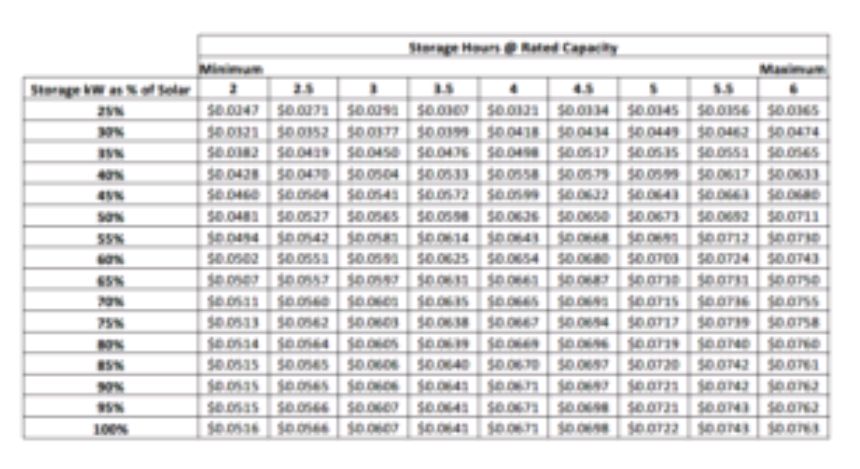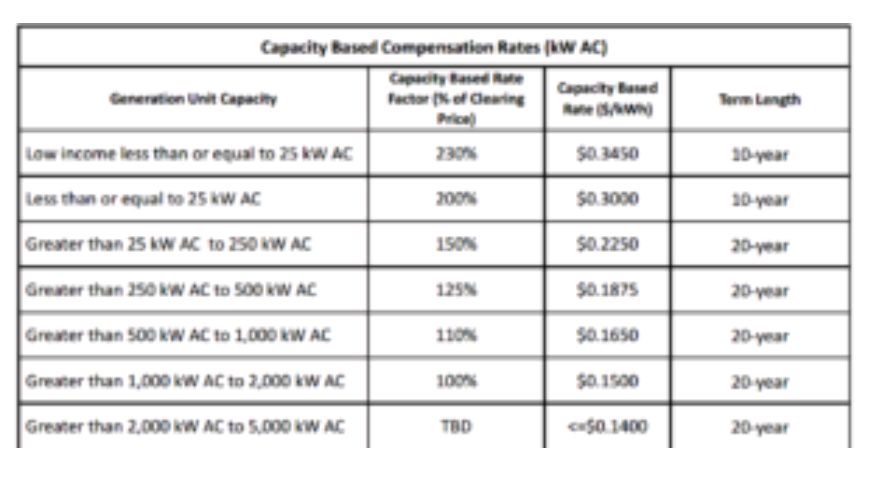On January 31, 2017, DOER Commissioner Judith Judson and Mike Judge, Director of the Renewable and Alternative Energy Division at DOER, presented the agency's final proposal for design of its successor to the successful Solar Carve-out and Solar Carve-out II programs in a 3-hour public meeting.
It's called SMART and lest you doubt that it is, DOER included the following equation in its presentation to prove it:

(Helpfully, that equation is followed up by a handy table to describe the 'storage adder' for projects that incorporate battery storage; more on that below.)
It's Complicated
If that equation suggests to you that the program has some complexity, you're right. There is a lot of complexity here both in the detailed mechanics of the program as proposed but also in the regulatory and administrative process that will be necessary to implement it at DOER and at the DPU.
It's important to note that this is just the latest (near final?) word from DOER on what it intends the program to look like. But the ultimate design of the program and its administration is not entirely in DOER's hands. As a tariff-based program derived from a stakeholder process managed by DOER, the DPU must approve the program through its own regulatory process. The process of adopting regulations and tariffs at DPU over the months ahead may very well change the final program details. That said, for its part, DOER took the position at Thursday's meeting that this program design is substantially complete, so this is not far off from the policy that will bring the Commonwealth to 3.2 GW of solar.
It Will Take a While
DOER expects the entire process to take approximately a year, including a 3-month emergency regulation period, hearings and a stakeholder process at the DPU, 6 months of related regulatory activity at DPU, adoption of tariffs, appointing at least one third party program administrator and a competitive solicitation for the first 100MW of projects.
The exact order and outcome of these processes are presently unknown but DOER expects that by late summer it will have completed the competitive solicitation to establish the baseline pricing for the program. That puts us at January 2018 at the earliest as a SMART start date.
SREC II Will Be Extended for Approximately One Year; SREC Factors Will Be Further Reduced
Given the long lead time needed to implement SMART, DOER intends to bridge the solar market by extending the current Solar Carve-out II program under the RPS for as long as one year and possibly more. Existing and new projects will continue to be permitted "For Good Cause" to re-apply for and receive statements of qualification under SREC II subject to construction deadlines and a further reduced SREC Factor. Those projects will need to interconnect before SMART is finally implemented. This is a now familiar remedy DOER has successfully implemented after the end of SREC I and now at least once for SREC II. Here are the proposed reduced SREC Factors, which reflect a 30% reduction over 'full' Factors. (DOER has updated its SREC II Guidelines with revised drafts here and here.)
| Market Sector | Reduced SREC Factor |
| A | 0.7 |
| B | 0.6 |
| C | 0.55 |
| Managed Growth | 0.5 |
SMART is Not an SREC Program
At a high level, the SMART program design largely tracks the features included in DOER's early straw proposal floated in fall of 2016. SMART will not be another Solar Carve-out and DOER is not creating this program as part of the RPS although it will have some effects on RPS obligations. (SREC I and SREC II will continue to function as designed and as extended).
Rather, DOER has designed SMART to be a 1600MW all-in declining block program including tariff-based compensation for solar PV projects and a new option for non-net-metering bill crediting. (Net metering remains compatible with SMART.) Eligible projects will be able to participate in a tariff to be adopted by Massachusetts' investor-owned utilities (municipal light plants will not participate in SMART). The tariff term will be at a "buy-all sell-all" rate over either 10 or 20 years depending on project size, with larger projects' payments stretched over 20 years. Projects may be no larger than 5MW AC. 'Sized-to-load' (behind the meter) and 'standalone' (essentially 'virtual net metering') systems will be treated differently. Behind the meter installations will receive a payment based on a three-year lookback average of volumetric rates and basic service.
Under those tariffs, the utilities will pay solar project owners a set rate that includes a specified base rate of compensation per kWh of generation delivered to the utility, apparently intended to be in consideration for transfer of all capacity, energy and attributes from the project. Projects will be eligible for 'adders' based on the attributes of the project site, project attributes and project off-takers similar to the categories established by the SREC Factors under SREC II.
'Greenfield' ground mounted projects will be subject to certain 'subtracters' reducing the baseline compensation to account for impacts on acreage previously used as open, agricultural or forest land not previously zoned for commercial and industrial uses.
The adders will be available for the following categories (multiple adders can be added to a single project):
- Solar Parking Canopies
- Brownfields
- Community Shared Solar (which includes an additional option for 'retail' products)
- Low Income Off-takers
- Public Facilities (now defined as installation on land owned by a municipality or other governmental entity and not simply based on the purchaser of net metering credits)
- Energy Storage
Here are the adders:

Remember that equation above, that's used to calculate the storage adder? DOER intends to apply the adder based on the ratio of storage capacity to solar capacity as well as the duration over which the storage unit may discharge power. Alternative Energy Credits under the Alternative Energy Portfolio Standard (AECs) may also be available if and when DOER revises it as part of its ongoing storage initiatives.
Here's that table of outputs from the equation above:

An alternative to-be-better-defined aspect of the program will permit bill crediting as net-metering-by-another name will also be available under the program design, independent of existing net metering rules and net metering caps, but at lower rates than full retail net metering. More on that is to come out of the regulatory process. To the extent net metering cap headroom remains, projects will remain eligible for net metering but the value of the net metering rate will affect the compensation level received under the SMART program.
Each block will be 200MW and the value of base compensation will decline by 4% in each subsequent block from the initial block's base value. Blocks will be divided proportionally using distribution load data in each utility territory and the smaller Unitil and Nantucket territories may receive fewer, larger blocks.
The value of the base compensation for the first block will be established through a competitive bidding process open to projects 1MW and above. The procurement will have a ceiling price of 15 cents per kWh for projects between 1 and 2 MW and of 14 cents for projects >2MW. The result of that bidding process will set the compensation level for all projects throughout the SMART program. Projects will receive compensation based on a multiple of the baseline compensation, depending on project size categories. Assuming the solicitation establishes a base rate at 15 cents, before adders, those rates would be as below.

The DOER's full presentation slides are available on its website here.
To view Foley Hoag's Energy & Cleantech Counsel blog please click here
The content of this article is intended to provide a general guide to the subject matter. Specialist advice should be sought about your specific circumstances.

